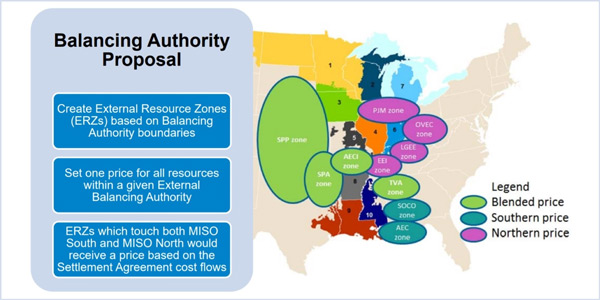By Amanda Durish Cook
CARMEL, Ind. — Market participants remain skeptical of a MISO plan to integrate external resource zones into its annual capacity auction, employing single clearing prices for each balancing authority, even as the RTO is introducing changes and speaking one-on-one with stakeholders about the proposal.
MISO Executive Director of Strategy Shawn McFarlane has initiated about “20-odd” conversations with stakeholders to explain the proposal and hear suggestions after last month’s stakeholder motion to delay its implementation. Market participants instead favor a more immediate capacity transfer rights proposal that would give equal treatment to long-term supply arrangements involving both external and internal planning resources. MISO is under no obligation to honor the July motion. (See MISO Members: Court Rebuff May Reduce External Zone Chances.)
“Our reaction was, ‘Let’s go have some conversations with people one-on-one,’” McFarlane said during an Aug. 9 Resource Adequacy Subcommittee meeting. “We probably understand some concerns that we didn’t understand before.”
The RTO plans to make final modifications at the Sept. 13 RASC meeting and continue stakeholder outreach, he said.
“The bottom line is we’re still not where we’d like to be in terms of stakeholder alignment,” he added.
MISO has changed its original proposal in an attempt to address some stakeholder questions, including about how it will treat border external resources and how excess auction revenues will be doled out to external resources with historical capacity arrangements.
The proposal now says that an external resource bordering the RTO that qualifies in more than one local resource zone must designate its zone two years in advance of a capacity auction and keep that designation and its associated pricing for two years.
“That’s not something we expect to see a lot of. MISO doesn’t have a lot of border resources,” said Laura Rauch, MISO manager of resource adequacy coordination.
For external resource zones that connect to more than one MISO local resource zone and require a blended price, shift factors will be calculated annually and posted in the second quarter ahead of next year’s auction, Rauch said.
MISO is also proposing to scrap a pecking-order approach to distributing excess auction proceeds to historical capacity arrangements to cover generation-to-load price separation. Under the plan, agreements initiated before the impending creation of external resource zones and resources impacted by zonal boundary changes will be just as eligible for credits as older, grandfathered contracts made before the start of the MISO capacity market.
Indianapolis Power and Light’s Ted Leffler asked if essentially all external resources are eligible to receive historical supply arrangement credits as a refund for price separation, what was the point of external pricing at all?
MISO will distribute revenues only to “long-term and consistently used” agreements, Rauch answered. The goal of external zone pricing will be the same as the Planning Resource Auction overall: to minimize total system costs, she said.
Last month, stakeholders warned MISO officials that if there isn’t consensus on the proposal, a recent appellate court ruling banning FERC’s suggested changes on PJM’s 2013 minimum offer price rule could adversely impact the commission’s ability to approve the changes.






